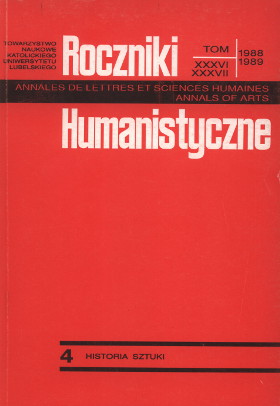On Mieczysław Wallis’s Criticism
Abstract
In the period of interwar 20 years Mieczysław Wallis incessantly pursued artistic criticism which, especially in the 1930s, remained in close relation with his semiotic research in which he played a pioneering role on a worldwide scale. He spoke on the current artistic events, noticing both the avant-garde and very conservative attitudes. Being an advocate of aesthetic pluralism he assumed that various phenomena could play the part of contemporary art for every recipient and there was no way to unify this concept. The critic’s attention is constantly focused on the problem of reception which, in his view, almost ontologically conditions the essence of art, and is connected with Wallis’s interests in semantics and semiology. The problems „of the understanding of artistic trends” and „of the understanding of the presenting elements in the works of art” are almost constantly present in his criticism, before they have been theoretically formulated. It was a criticism not only explaining works but also putting a recipient in the presence of an artistic fact, which has its own reasons and also its own inconsequences. Wallis does not mean the acceptance of a work but an active intellectual attitude which could imply aesthetic experience.
Wallis as a critic was not enchanted by the art of his times, nor favoured any extreme attitudes, but appreciated the value of an experiment and conscientiously analyzed new phenomena, and was well-oriented in European art. He discusses more broadly the production of Wąsowicz, Zak, Zamoyski, Makowski, and Rafał Malczewski.
Copyright (c) 1989 Roczniki Humanistyczne

This work is licensed under a Creative Commons Attribution-NonCommercial-NoDerivatives 4.0 International License.





